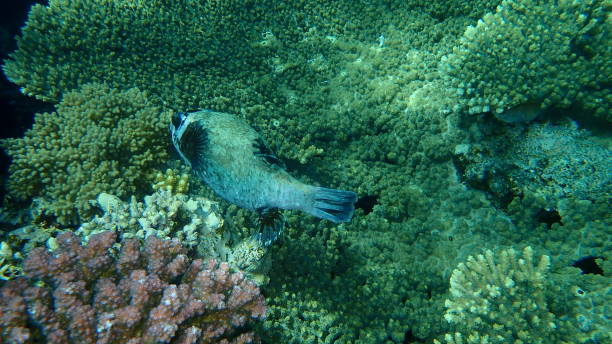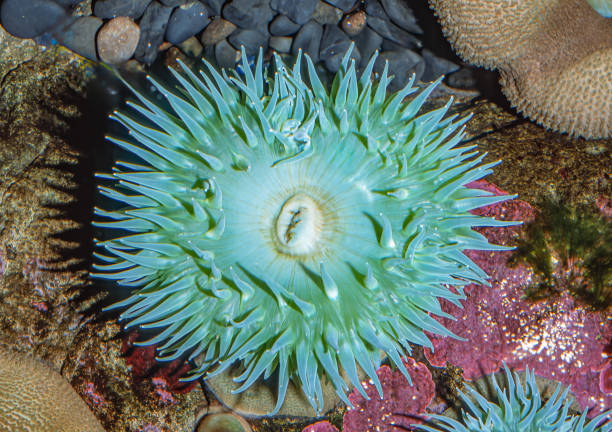Spanning over 344,400 square kilometers, the Great Barrier Reef is not only the largest coral reef system in the world but also a bustling underwater metropolis for a myriad of marine life. From the tiniest zooplankton to the majestic humpback whale, this vibrant ecosystem plays host to some of the most fascinating animals on the planet. In this article, we’ll dive into the world beneath the waves to highlight some of the incredible species that call the Great Barrier Reef home. These include a spectrum of creatures ranging from the iconic clownfish to the elusive Reef Shark. Each inhabitant plays a crucial role in maintaining the health and complexity of this unique marine environment.
The Coral Polyps: Building Blocks of the Reef

While often overlooked for their more flamboyant reef neighbors, coral polyps are in fact the architects of the Great Barrier Reef. These tiny, delicate organisms form colonies that produce calcium carbonate exoskeletons, creating the reef’s structure. Each polyp is an individual, but they work together in a symbiotic relationship with photosynthetic algae known as zooxanthellae, which live within their tissues. The zooxanthellae provide the polyps with nutrients through photosynthesis, while the polyp offers a protected environment and the necessary compounds for the algae’s photosynthetic process. Over thousands of years, these polyps build massive coral reef structures which become the fundamental habitats for many species.
– Staghorn Coral
– Brain Coral
– Elkhorn Coral
– Table Coral
Fish: An Underwater Kaleidoscope
With over 1,500 species, fish are the most visible and diverse vertebrates in the Great Barrier Reef. They come in all shapes and sizes, playing various roles in the reef ecosystem.
1. The clownfish, made famous by the animated movie “Finding Nemo”, are commonly found nestled within the stinging tendrils of sea anemones.
2. Angel fish and butterfly fish display vibrant hues and patterns that contribute to the reef’s visual feast.
3. The parrotfish, named for their beak-like mouths, nibble on algae and dead coral, effectively cleaning the reef and helping to counteract the growth of seaweeds that can choke out corals.
4. The predatory barracuda surveys the waters with its sleek, silver body, always on the lookout for its next meal.
5. Lastly, groupers can often be spotted lurking in the various nooks and crannies of the reef, hoping to ambush unsuspecting prey.
– Clownfish
– Angel Fish
– Butterfly Fish
– Parrotfish
– Barracuda
– Grouper
Marine Mammals: Enigmatic Giants
Marine mammals add a thrilling dimension to the Great Barrier Reef’s wildlife ensemble. Several species of dolphins, including the bottlenose and the Australian humpback, ply the waters of the reef, showcasing their intelligence and playful demeanor. The Great Barrier Reef also serves as a significant breeding ground for the humpback whale, where these colossal creatures perform spectacular aerial displays. Dugongs, also known as sea cows, graze the reef’s seagrass beds, playing a vital role in the health of this marine pasturage. It’s common for these species to travel significant distances to feed and breed within the confines of the reef ecosystem.
– Bottlenose Dolphin
– Australian Humpback Dolphin
– Humpback Whale
– Dugong
4. Reptiles: Ancient Mariners
Reptiles have successfully adapted to life in the salty waters of the Great Barrier Reef. Six of the world’s seven species of marine turtles can be found here. The Green Sea Turtle is one of the most common, grazing on the seagrasses and algae. The daunting Saltwater Crocodile also claims this habitat, often found sunbathing on riverbanks or lurking in mangroves. Remarkably, these formidable predators can swim long distances across the open ocean. Each of these reptilian species contributes to the ecosystem’s diversity, whether by maintaining seagrass meadows or balancing food chains.
– Green Sea Turtle
– Saltwater Crocodile
Invertebrates: The Unsung Heroes of the Reef
Invertebrates are the most abundant and varied organisms in the Great Barrier Reef ecosystem. These spineless wonders range from the microscopic plankton to the more noticeable creatures like the colorful Christmas Tree Worms and elegant Sea Stars. Giant Clams, the world’s largest bivalve mollusk, provide a home for algae while adding to the reef’s structural diversity. Also, the opportunistic Mantis Shrimp, with its formidable claws, is a critical predator of the reef. Meanwhile, the Crown-of-Thorns Starfish, although sometimes a threat to coral due to its voracious appetite, is a natural part of the reef’s intricate food web when in balance.
– Christmas Tree Worms
– Sea Stars
– Giant Clams
– Mantis Shrimp
– Crown-of-Thorns Starfish
Conclusion
The Great Barrier Reef’s vast biodiversity makes it a powerhouse of marine life, critical to both ecological balance and natural heritage. By providing shelter, food, and breeding grounds, the reef supports an extraordinary array of animals. Each species, no matter how great or small, plays an integral role in the reef’s function and sustainability. As such, the protection and conservation of the Great Barrier Reef are paramount to preserving not only its beauty but also the lives of its countless inhabitants—ensuring that this natural wonder remains vibrant and teeming with life for future generations to marvel at and study.
FAQs About Animals in the Great Barrier Reef
1. What are the main threats to the animals of the Great Barrier Reef?
Climate change, particularly coral bleaching due to rising sea temperatures, overfishing, and pollution, including plastic waste and agricultural runoff, are significant threats to the Great Barrier Reef’s inhabitants.
2. Can marine life in the Great Barrier Reef be seen all year round?
While many species inhabit the reef year-round, some, like the humpback whale, are seasonal visitors. The best time for viewing marine life tends to be between June and November when the water clarity is at its highest.
3. How can tourists responsibly interact with the marine life of the Great Barrier Reef?
Tourists should always follow guidelines provided by tour operators and not touch or remove any marine life or corals. It’s important to practice good snorkeling and diving habits, maintain buoyancy, and avoid stepping on the reef to prevent damage.
4. Are there any endemic species to the Great Barrier Reef?
Yes, there are species of fish, corals and other invertebrates that are found only in the Great Barrier Reef ecosystem.
5. How is the Great Barrier Reef being protected?
The Great Barrier Reef Marine Park Authority is tasked with preserving the reef’s biodiversity through various programs such as controlling fishing, improving water quality, and minimizing the impact of tourism and development.
